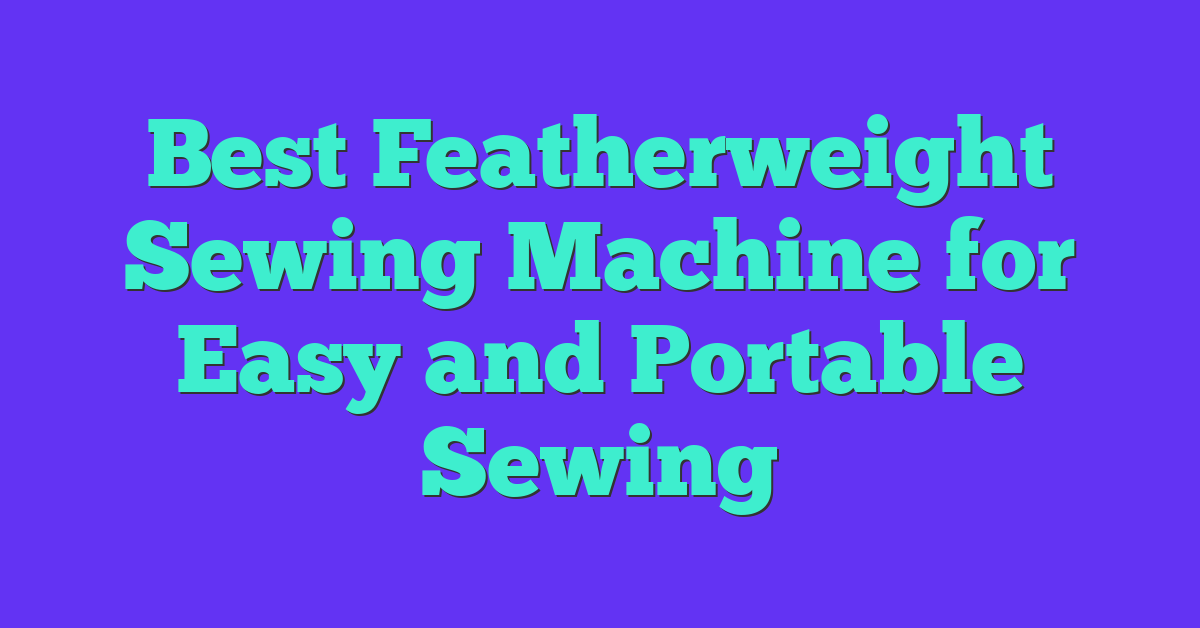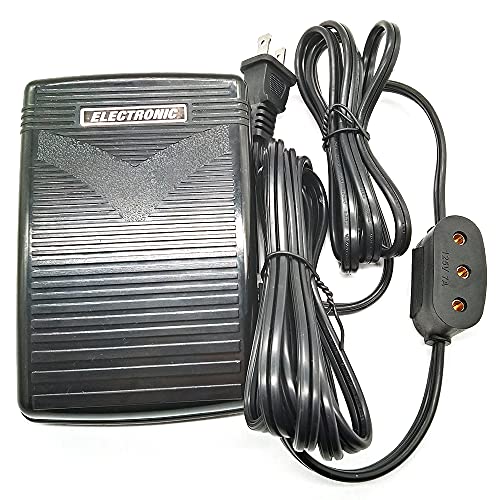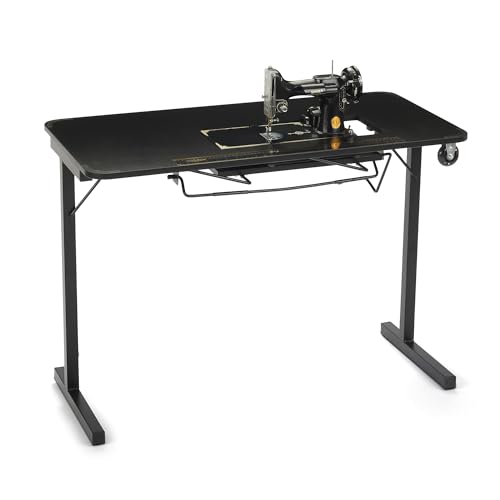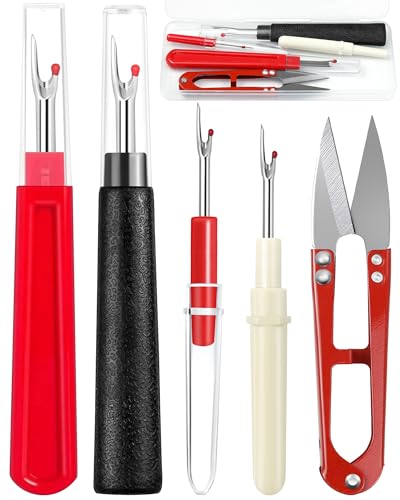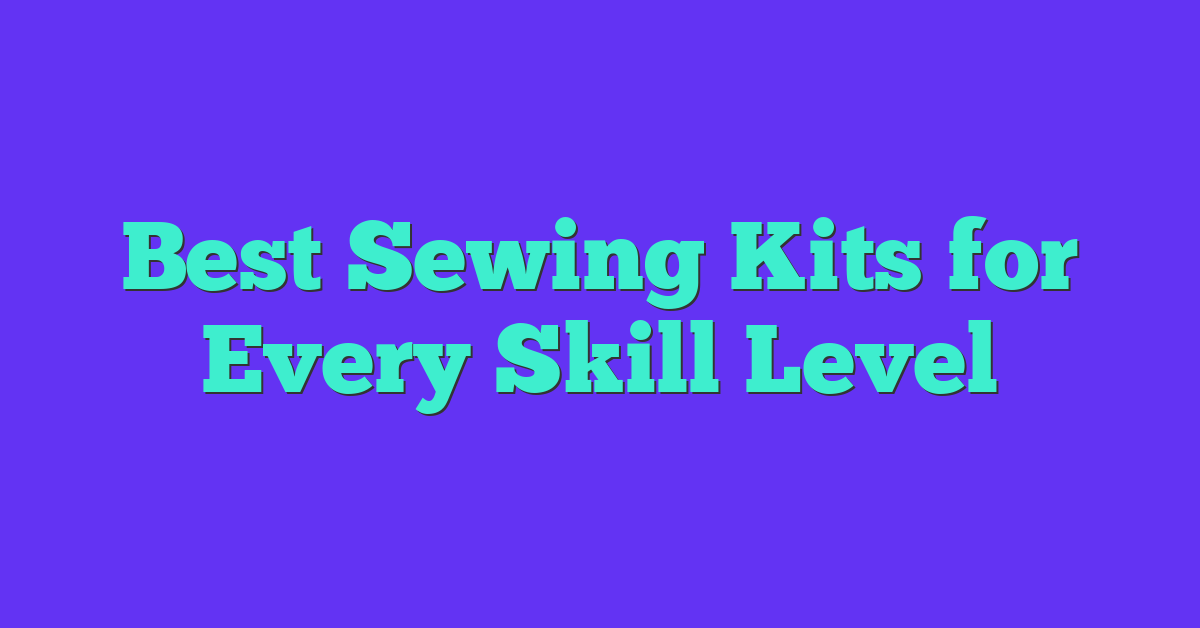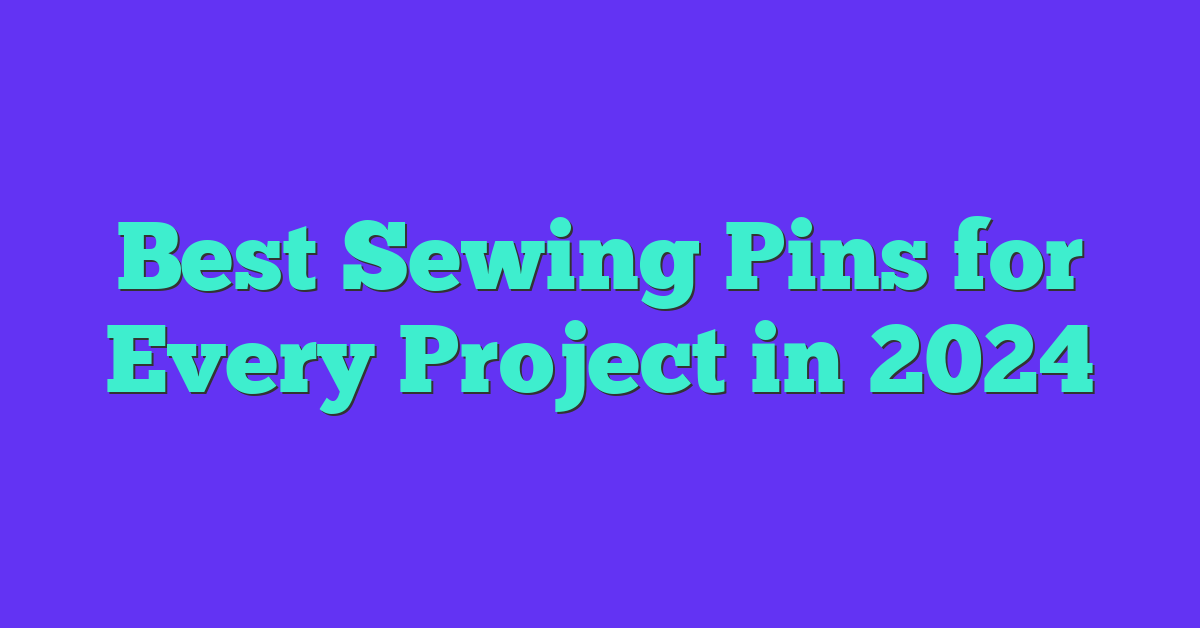As a sewing enthusiast, I understand the importance of having a reliable and efficient sewing machine. Whether you’re a beginner or an experienced sewer, having the right sewing machine can make all the difference in your sewing projects. One popular type of sewing machine that has gained a lot of attention in recent years is the featherweight sewing machine. These machines are known for their portability, durability, and versatility, making them a great choice for sewers of all levels.
Understanding featherweight sewing machines is essential if you’re in the market for a new sewing machine. These machines were first introduced by the Singer Company in the 1930s and quickly became popular due to their lightweight design and ease of use. Over the years, several models of featherweight sewing machines have been introduced, each with its own unique features and specifications. In this article, I will explore the top featherweight sewing machine models and provide a comprehensive buying guide to help you make an informed decision.
Key Takeaways
- Featherweight sewing machines are a popular choice due to their portability, durability, and versatility.
- Understanding the different models and features of featherweight sewing machines is essential when making a purchasing decision.
- A comprehensive buying guide can help you choose the best featherweight sewing machine for your needs.
Understanding Featherweight Sewing Machines
As someone who has been sewing for years, I can confidently say that the Singer Featherweight sewing machine is one of the best machines out there. Featherweight sewing machines have been around since the 1930s, and they are still popular today. Here is what you need to know about featherweight sewing machines.
What is a Featherweight Sewing Machine?
A featherweight sewing machine is a small, lightweight machine that is easy to use and transport. These machines are perfect for people who want a machine that is easy to move around or take to sewing classes. Featherweights are also great for people who have limited space in their sewing area.
Why Choose a Featherweight Sewing Machine?
Featherweight sewing machines are popular for several reasons. First, they are lightweight and easy to carry around. Second, they are easy to use and perfect for beginners. Third, they are reliable and can last for years with proper maintenance. Fourth, they have a vintage look that many people love. Finally, they are great for quilting, as they can handle thick layers of fabric.
Features of Featherweight Sewing Machines
Featherweight sewing machines have several features that make them unique. Here are some of the most important features:
- Lightweight: Featherweights weigh only about 11 pounds, making them easy to carry around.
- Portable: Featherweights come with a carrying case, making them easy to transport.
- Vintage look: Featherweights have a classic, vintage look that many people love.
- Reliable: Featherweights are known for their reliability and can last for years with proper maintenance.
- Straight stitch only: Featherweights can only do a straight stitch, which may be a limitation for some people.
- Limited features: Featherweights do not have many of the features that modern machines have, such as automatic threading or buttonholes.
Conclusion
Featherweight sewing machines are a great choice for anyone who wants a lightweight, portable, and reliable machine that can handle a variety of sewing projects. While they may not have all of the features of modern machines, they are perfect for beginners and experienced sewers alike.
Top Featherweight Sewing Machine Models
As a sewing enthusiast, I have come across several featherweight sewing machine models that are worth mentioning. These machines are not only lightweight and portable but also efficient and reliable. Here are some of the top featherweight sewing machine models that I recommend:
Singer Featherweight 221
The Singer Featherweight 221 is a classic machine that has been around for decades. It’s a lightweight machine that is easy to carry around, making it perfect for sewing on the go. This machine is also known for its durability and reliability. It has a straight stitch and can sew through several layers of fabric without any issues. The Singer Featherweight 221 is a great machine for beginners and advanced sewers alike.
Singer Featherweight C240
The Singer Featherweight C240 is a modern version of the classic Singer Featherweight 221. It’s a computerized machine that has several advanced features, including 70 built-in stitches, an LCD screen, and a drop-in bobbin system. This machine is perfect for those who want a lightweight machine that can handle a variety of sewing projects. The Singer Featherweight C240 is also easy to use and comes with a detailed instruction manual.
Singer Heavy Duty 4423
The Singer Heavy Duty 4423 is a powerful machine that can handle heavy-duty sewing projects. It has a stainless steel bedplate that provides smooth fabric feeding and can sew through several layers of fabric with ease. This machine also has a fast sewing speed of 1,100 stitches per minute, making it perfect for those who need to complete their projects quickly. The Singer Heavy Duty 4423 is also easy to use and comes with several accessories, including a walking foot and a quilting guide.
Singer 301
The Singer 301 is a vintage machine that is still popular among sewing enthusiasts. It’s a lightweight machine that has a straight stitch and can sew through several layers of fabric without any issues. This machine also has a unique slant needle design that provides better visibility and easier access to the bobbin. The Singer 301 is perfect for those who want a vintage machine that is both reliable and efficient.
Singer 66
The Singer 66 is another vintage machine that is still popular among sewing enthusiasts. It’s a heavy-duty machine that can handle a variety of sewing projects, including leather and denim. This machine also has a unique vibrating shuttle system that provides smooth fabric feeding and can sew through several layers of fabric with ease. The Singer 66 is perfect for those who want a vintage machine that is both reliable and efficient.
Model 221 and Model 222
The Model 221 and Model 222 are both classic Singer Featherweight machines that are still popular among sewing enthusiasts. These machines are lightweight and portable, making them perfect for sewing on the go. They both have a straight stitch and can sew through several layers of fabric without any issues. The Model 222 also has a free arm, making it perfect for sewing cuffs and sleeves. Both models are perfect for beginners and advanced sewers alike.
In conclusion, these are some of the top featherweight sewing machine models that I recommend. Whether you’re a beginner or an advanced sewer, these machines are perfect for all your sewing needs. They are lightweight, portable, and efficient, making them perfect for sewing on the go.
Features and Specifications
When looking for the best featherweight sewing machine, there are several features and specifications to consider. As an avid sewer, I have found that the following elements are essential for a high-quality sewing experience.
Bobbin and Bobbin Case
A good featherweight sewing machine should have a sturdy and reliable bobbin and bobbin case. The bobbin should be easy to insert and remove, and the bobbin case should fit snugly into the machine. Look for a machine that has a metal bobbin case, as these tend to be more durable and long-lasting.
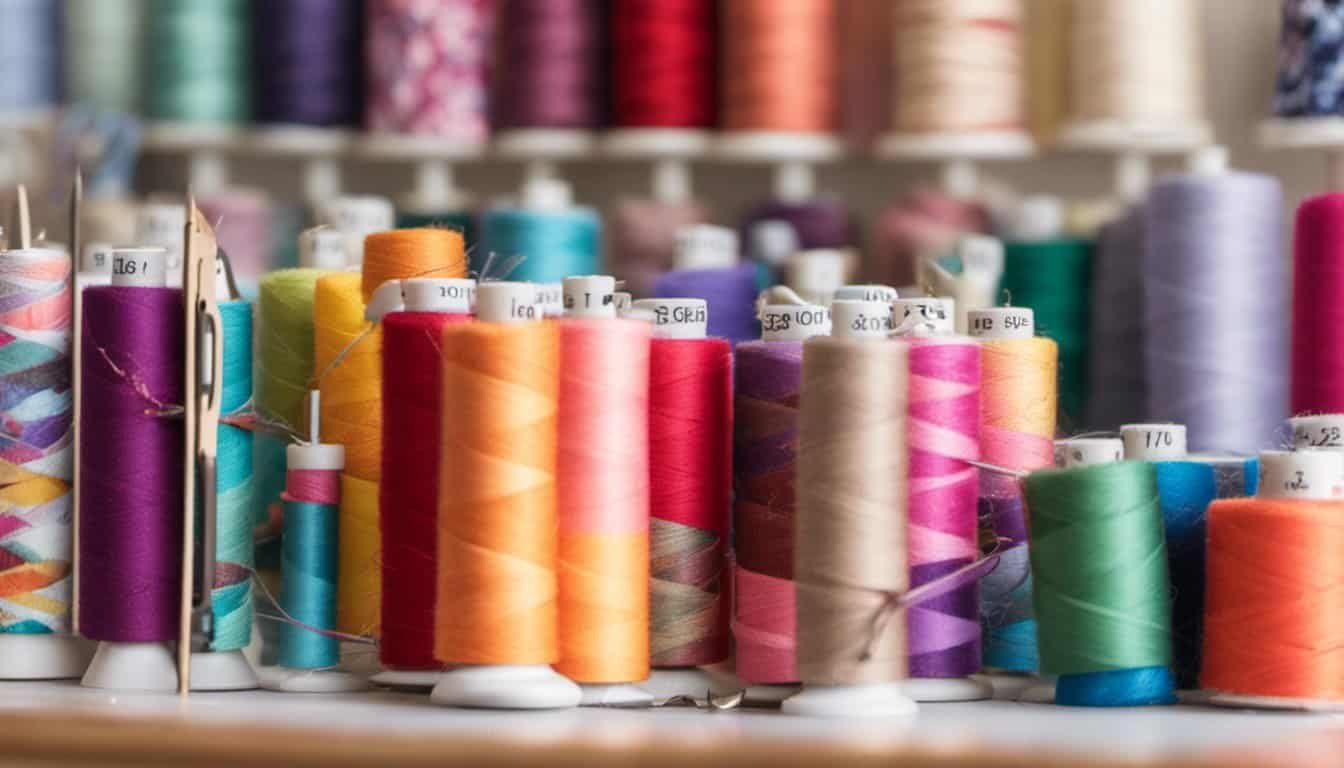
Needle
The needle is a crucial component of any sewing machine. A good featherweight machine should have a high-quality needle that is easy to change and can handle a variety of fabrics. Look for a machine that has a needle that is compatible with different types of needles, including universal and leather needles.
Stitches
The number and variety of stitches a featherweight sewing machine can produce are important to consider. While some sewers may only need a straight stitch, others may require a variety of stitches for different projects. Look for a machine that offers a range of stitches, including zigzag and decorative stitches.
Attachments
Attachments are additional tools that can enhance the sewing experience. Look for a machine that comes with a variety of attachments, including a zipper foot, buttonhole foot, and walking foot. These attachments can make sewing different fabrics and projects much easier.
Color and Material
While the color and material of a sewing machine may not affect its performance, it can impact the aesthetic appeal of the machine. Look for a machine that comes in a color and material that you find attractive and matches your sewing space.
Feed Dogs and Harp Space
« Best Singer Sewing Machines for Kids: Fun and Easy to Use Options
Best Free Arm Sewing Machines: Top Picks for Budget-Friendly Sewing »
The feed dogs and harp space are important components to consider when looking for a featherweight sewing machine. The feed dogs should be able to move the fabric through the machine smoothly, and the harp space should be large enough to accommodate larger projects.
Presser Feet
Presser feet are another important attachment to consider. Look for a machine that comes with a variety of presser feet, including a standard foot, zipper foot, and buttonhole foot. These attachments can make sewing different fabrics and projects much easier.
Simanco and Straight Stitch Machines
Simanco is a brand of sewing machine parts that are known for their high quality and durability. Look for a machine that has Simanco parts, as these tend to be more reliable and long-lasting. Additionally, consider looking for a straight stitch machine, as these are often more precise and efficient than machines that offer a variety of stitches.
Computerized Sewing Machine
Finally, consider whether you want a computerized sewing machine. These machines offer a range of features and settings that can make sewing easier and more efficient. However, they can also be more expensive and may require more maintenance than manual machines.
Overall, when looking for the best featherweight sewing machine, consider the above features and specifications to find a machine that will meet your needs and provide a high-quality sewing experience.
Performance and Sewing Projects
When it comes to performance, the featherweight sewing machine is a top-quality machine that can handle a variety of sewing jobs. Whether you are working on quilting, sewing projects, or heavy fabrics like denim, this machine has the piercing power to get the job done.
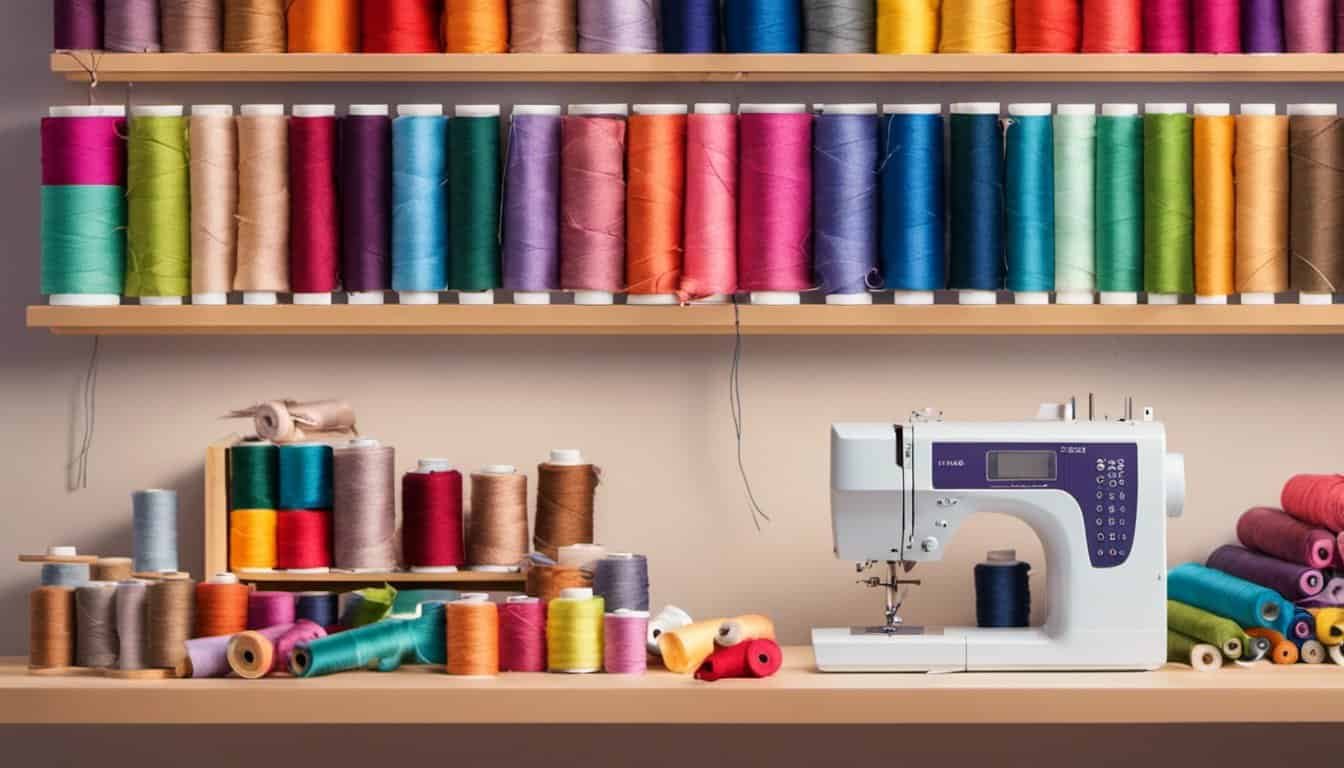
One thing to keep in mind is the limited harp space, which may not be suitable for larger projects. However, for smaller projects, the compact size of the featherweight can be an advantage as it makes it easy to maneuver and work with precision.
In terms of sewing projects, the featherweight is a versatile machine that can handle a range of fabrics and designs. It is particularly well-suited for piecing and quilting, as it can sew straight and even stitches with ease. The machine’s lightweight design also makes it easy to transport to sewing classes or workshops.
When working with heavy fabrics like denim, it is important to use the correct needle size and thread tension to ensure the best results. The featherweight can handle heavy fabrics, but it may require some adjustments to the settings to achieve the desired stitch quality.
Overall, the featherweight sewing machine is a top-performing machine that is well-suited for a variety of sewing projects. Its compact size, limited harp space, and piercing power make it an excellent choice for quilters and those working on smaller projects.
Buying Guide for Featherweight Sewing Machines
As a sewing enthusiast, I have come across many different types of sewing machines, but the Singer Featherweight sewing machine is one of my favorites. In this buying guide, I will share some important factors to consider when buying a Featherweight sewing machine.
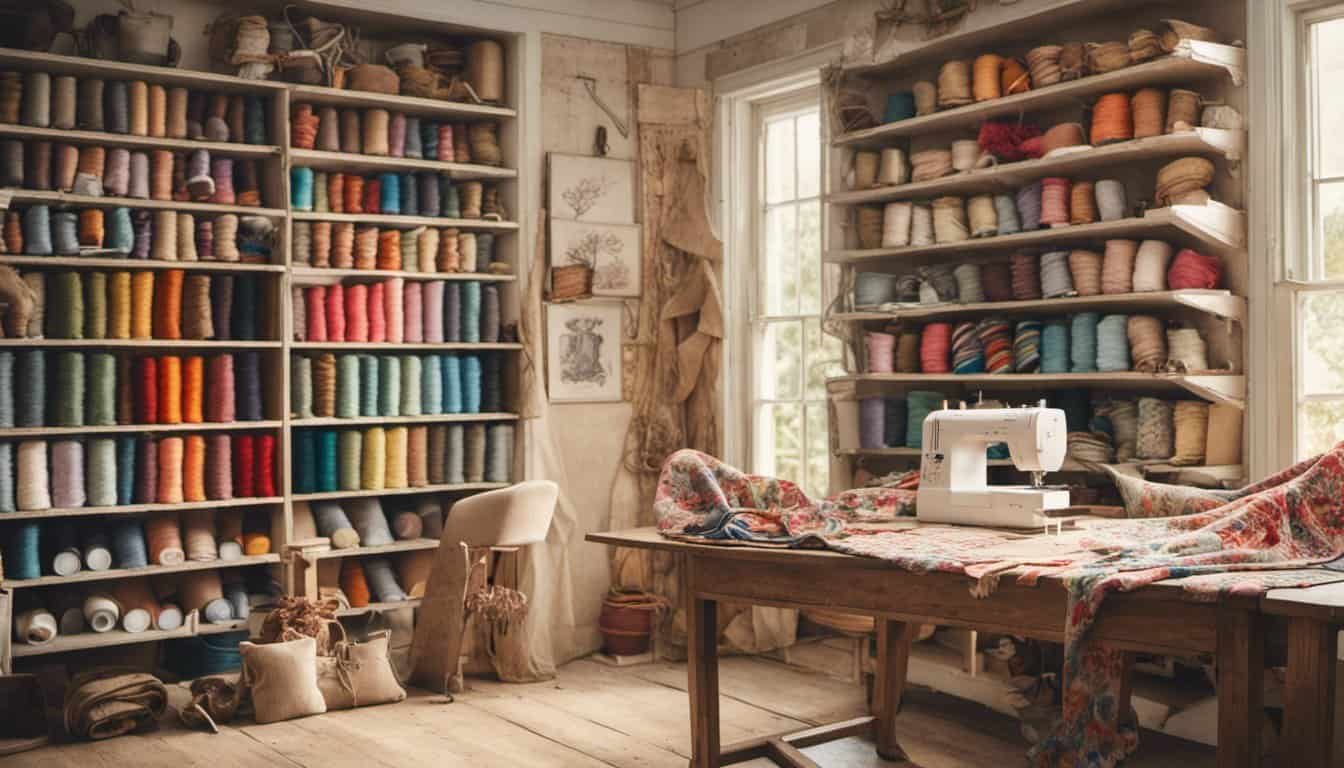
Online vs. Brick-and-Mortar Sellers
When buying a Featherweight sewing machine, you have two options: online retailers and brick-and-mortar stores. Buying from a brick-and-mortar store allows you to see and touch the machine before making a purchase. On the other hand, buying online is convenient and often more affordable. I recommend doing research on both types of sellers before making a decision.
Price and Affordability
Featherweight sewing machines are in high demand, and as a result, they can be quite expensive. However, there are still affordable options available. It’s important to consider your budget and what you’re willing to spend on a sewing machine. Keep in mind that a Featherweight sewing machine is an investment that can last a lifetime.
Performance and Power
Featherweight sewing machines are known for their powerful performance and ability to handle a variety of fabrics. When looking for a Featherweight sewing machine, consider the power of the motor and the machine’s ability to handle different types of fabrics. A good Featherweight sewing machine should be able to handle everything from lightweight fabrics to heavy-duty materials.
Pros and Cons
Like any sewing machine, Featherweight sewing machines have their pros and cons. Some of the pros include their portability, ease of use, and topstitching capabilities. However, some cons include difficulty finding replacement parts and the fact that they are considered collectible items, which can drive up the price.
Comparing Featherweight Sewing Machines
When shopping for a Featherweight sewing machine, it’s important to compare different models and series. Some models may have additional features or upgrades that make them more desirable for certain buyers. Consider your needs as a buyer and what features are most important to you.
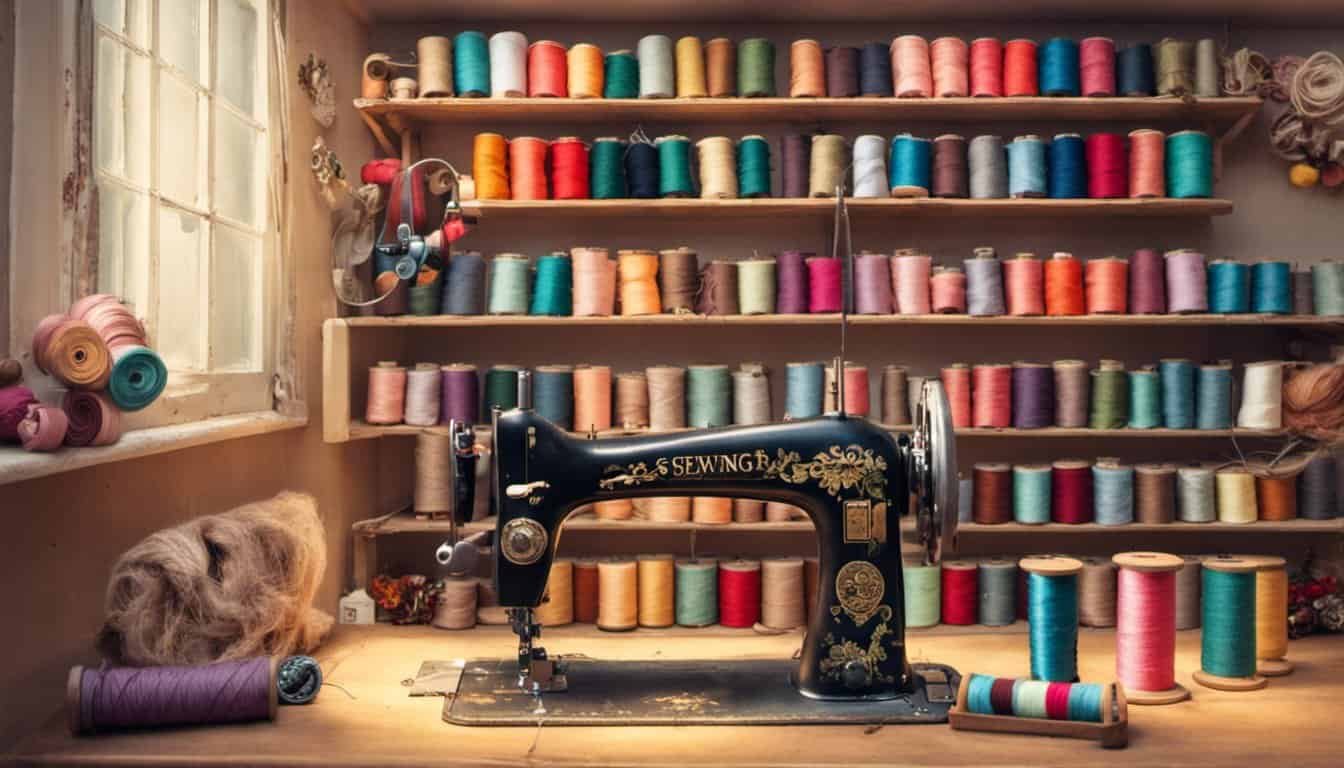
Conclusion
Buying a Featherweight sewing machine can be a great investment for any sewing enthusiast. By considering the factors outlined in this buying guide, you can find a machine that meets your needs and fits your budget. Whether you’re shopping online or in antique shops, a Featherweight sewing machine is a powerful and collectible addition to any sewing room.
Maintenance and Care
As an avid user of my Singer Featherweight sewing machine, I understand the importance of proper maintenance and care. Regular maintenance not only keeps your machine in good working condition but also prolongs its lifespan.
To keep my machine in tip-top shape, I follow these simple maintenance tips:
Regular oiling: I oil my machine after every use, using only Sew-Retro Sewing Machine Oil or Triflow oil. I avoid using 3-in-1 oil or WD-40, as they can cause damage to the machine. I also make sure to oil the right parts, such as the hook race, feed dog, and needle bar. For a comprehensive guide on how and where to oil your machine, check out this tutorial.
Cleaning: I clean my machine regularly, especially after extended use. I use a soft cloth to wipe the machine’s exterior and remove any dust or debris. For tougher stains or adhesive residue, I use kerosene or sewing machine oil, but only on the affected areas and not the entire surface. For more tips on cleaning and polishing your machine, check out this article.
Service and repair: I take my machine for service and repair to a trusted dealer or technician. Regular servicing helps identify and fix any underlying issues before they become major problems. It also ensures that my machine is in good working condition and ready for any sewing project.
Convenience: To make maintenance and care more convenient, I keep a maintenance book or log. This helps me keep track of when I last oiled or serviced my machine and any issues that I noticed. It also helps me plan for future maintenance and avoid any surprises.
By following these simple maintenance tips, I have been able to keep my Singer Featherweight in excellent working condition. Whether you are a beginner or an experienced user, proper maintenance and care are essential for getting the most out of your machine.
Accessories and Add-ons
When it comes to sewing machines, accessories and add-ons can make all the difference. The Singer Featherweight is no exception. Here are some of the accessories and add-ons that I have found to be particularly useful:

Carrying case
One of the great things about the Singer Featherweight is its portability. But to make it truly portable, you need a good carrying case. There are many different carrying cases available, but I recommend one that is specifically designed for the Singer Featherweight. These cases are usually made of sturdy materials and have plenty of padding to protect your machine during transport.
Threading
Threading a sewing machine can be a bit of a hassle, but there are accessories that can make it easier. One of my favorites is a needle threader. This little gadget makes threading the needle a breeze, especially for those with poor eyesight or shaky hands.
Finish
The finish of your sewing projects can make all the difference in the final product. That’s why I recommend investing in a good quality thread. There are many different types of thread available, but I find that cotton thread works best for most projects. It’s strong, durable, and comes in a wide variety of colors.
Presser feet
The Singer Featherweight comes with a few different presser feet, but there are many more available. Some of my favorites include the 1/4″ foot, the walking foot, and the free-motion quilting foot. Each of these presser feet has a specific purpose and can help you achieve professional-looking results.
Extension table
If you plan on doing any large-scale sewing projects, an extension table can be a real lifesaver. This accessory attaches to your sewing machine and provides a larger work surface, making it easier to handle large pieces of fabric.

Foot controller
The foot controller is an essential part of any sewing machine, and the Singer Featherweight is no exception. If your foot controller is starting to wear out or malfunction, it’s important to replace it as soon as possible. There are many different foot controllers available, but make sure to choose one that is specifically designed for the Singer Featherweight.
Bobbin winder
Finally, a good bobbin winder can be a real time-saver. Rather than winding bobbins by hand, a bobbin winder can do it for you in a fraction of the time. There are many different bobbin winders available, but make sure to choose one that is compatible with the Singer Featherweight.
In conclusion, investing in accessories and add-ons can really enhance your sewing experience with the Singer Featherweight. From carrying cases to bobbin winders, there are many different accessories available that can make your sewing projects easier and more enjoyable.
Collecting and Restoring Featherweight Sewing Machines
As a vintage sewing machine enthusiast, I have found that collecting and restoring Featherweight sewing machines can be a rewarding and enjoyable hobby. These machines, which were first introduced by Singer in 1933, are known for their reliability, portability, and ease of use.
When it comes to collecting Featherweights, enthusiasts often look for machines in good cosmetic condition, with minimal wear and tear. However, it is important to note that even machines with chips or other cosmetic imperfections can be restored to their former glory with a little bit of work.

Restoring a Featherweight can involve anything from a deep clean to a full repaint. Many collectors and enthusiasts opt to have their machines professionally restored or repainted, while others prefer to do the work themselves. There are many resources available online for those who want to learn how to restore their own Featherweights, including tutorials and forums where enthusiasts can ask for advice and share tips.
One important thing to keep in mind when restoring a Featherweight is that it is important to preserve the machine’s original parts and features as much as possible. This means using original replacement parts whenever possible, and avoiding any modifications that would alter the machine’s original functionality or appearance.
Overall, collecting and restoring Featherweight sewing machines can be a fun and rewarding hobby for vintage sewing machine enthusiasts. Whether you are looking for a machine to add to your collection, or are interested in restoring one to its former glory, there are many resources available to help you along the way.
Where to Buy Featherweight Sewing Machines
If you’re in the market for a Featherweight sewing machine, there are several options available to you. In this section, I’ll cover where to buy Featherweight sewing machines and what to look for when purchasing one.
Dealers
One option is to purchase from a dealer. Dealers can be found through a quick internet search or by contacting Singer directly. Dealers typically offer a warranty and may provide additional services such as maintenance and repairs. However, purchasing from a dealer can be more expensive than other options.
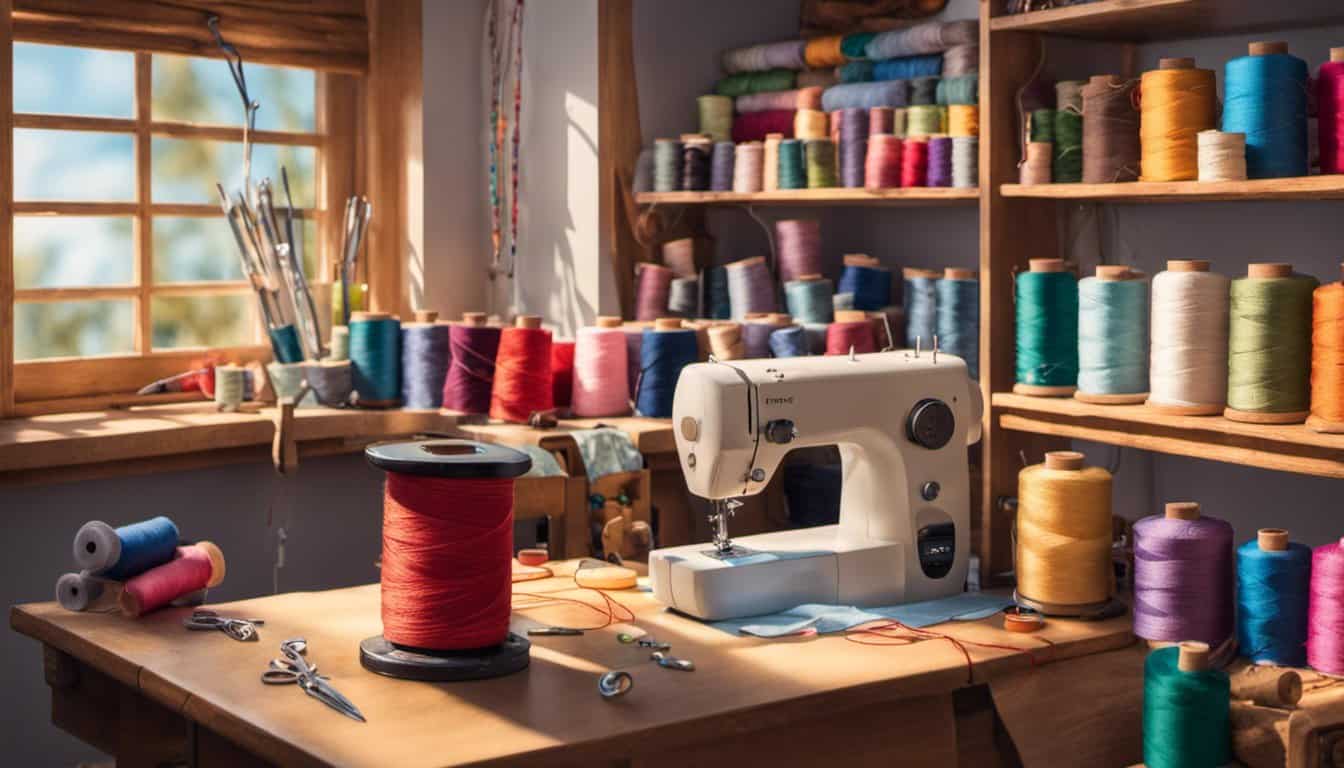
Online
Another option is to purchase online. Websites such as eBay and Amazon offer a variety of Featherweight sewing machines in different colors and conditions. Be sure to read the seller’s reviews and check their return policy before making a purchase. Additionally, be aware of shipping costs and delivery times.
Privately
Finally, you can purchase a Featherweight sewing machine privately. This can be done through websites such as Craigslist and Facebook Marketplace. When purchasing privately, be sure to ask for detailed photos and ask questions about the machine’s condition and history. It’s also important to meet in a public place to exchange the machine and payment.
Colors
When it comes to Featherweight sewing machines, there are three main colors: black, white, and tan. Black Featherweights are the most common and were produced from 1933 to 1964. White Featherweights were produced from 1964 to 1967 and are less common. Tan Featherweights were only produced for a short time in the early 1960s and are the rarest.
Condition
When purchasing a Featherweight sewing machine, it’s important to consider the machine’s condition. Look for machines that are in good working order and have minimal wear and tear. Machines with their original carrying case and accessories are also desirable.
In conclusion, there are several options available when it comes to purchasing a Featherweight sewing machine. Whether you choose to buy from a dealer, online, or privately, be sure to do your research and consider the machine’s color and condition before making a purchase.

Community and Resources
As a featherweight sewing machine enthusiast, I’ve found that being a part of the sewing community has been incredibly helpful. I’ve met so many like-minded individuals who share my love for these machines and have been able to learn so much from them. One person who has been particularly helpful is Nancy Johnson-Srebro, who is a wealth of knowledge when it comes to featherweight machines. She has a blog and YouTube channel where she shares tips and tricks for maintaining and using these machines.
Another great resource for the sewing community is PatternReview.com. This website has a section specifically for featherweight sewing machines where users can share their experiences with different models and ask for advice. It’s a great place to connect with other featherweight enthusiasts and get answers to any questions you may have.
If you’re looking to purchase a featherweight machine, the Featherweight Shop is a great place to start. They specialize in selling and servicing these machines and have a wide selection of models to choose from. They also have a blog where they share information about the history of these machines and tips for maintaining them.
One thing I’ve learned is that there are different variations of featherweight machines, and one of the most sought-after versions is the one with gold decals. These machines are highly collectible and can be quite expensive. If you’re interested in learning more about them, the Featherweight Shop has a great comparison guide that breaks down the specifics of each model by year and series.
Overall, being a part of the sewing community and utilizing these resources has been invaluable in my journey as a featherweight sewing machine enthusiast. Whether you’re a seasoned collector or just starting out, I highly recommend connecting with others who share your passion and utilizing these resources to learn more about these amazing machines.

Frequently Asked Questions
What are some popular models of Singer Featherweight sewing machines?
Some of the most popular models of Singer Featherweight sewing machines include the Singer Featherweight 221 and the Singer Featherweight 222K. These machines are known for their compact size, portability, and reliability.
How can I determine the value of a Singer Featherweight 221?
The value of a Singer Featherweight 221 can vary depending on several factors, such as the machine’s condition, age, and rarity. To determine the value of a Singer Featherweight 221, you can consult with an appraiser or research recent sales of similar machines online.
What are the differences between Singer Featherweight 221 and 222?
The Singer Featherweight 221 and 222 are similar in many ways, but there are a few key differences. The Singer Featherweight 222 is a newer model that was produced in the 1950s and 1960s, while the Singer Featherweight 221 was produced in the 1930s through the 1950s. The Singer Featherweight 222 is also slightly larger and heavier than the Singer Featherweight 221.
Why do quilters prefer Singer Featherweight sewing machines?
Quilters often prefer Singer Featherweight sewing machines because they are lightweight, portable, and reliable. These machines are also known for their ability to sew through multiple layers of fabric with ease, making them ideal for quilting projects.
What should I look for when buying a used Singer Featherweight sewing machine?
When buying a used Singer Featherweight sewing machine, it’s important to check the machine’s overall condition, including the motor, wiring, and any accessories that come with it. You should also check for any signs of wear and tear, such as rust or scratches, and test the machine to ensure it is in good working order.
Where can I find Singer Featherweight sewing machines for sale?
Singer Featherweight sewing machines can be found for sale in a variety of places, including online marketplaces such as eBay and Etsy, antique shops, and specialty sewing machine dealers. It’s important to do your research and buy from a reputable seller to ensure you are getting a quality machine.

